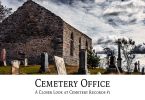In the quiet cemetery of Paradise, Texas, a gravestone has captivated visitors, myself included. It’s a simple stone, worn by time, but the inscription makes you stop and think. It reads: “The Lost Arm of F. Stewart, September 27, 1910.”
I remember the first time I saw it. The date struck me immediately—September 27, 1910—but what stood out even more was that this gravestone seemed dedicated to an arm. Why just the arm? Who was F. Stewart, and what could have happened to warrant such an unusual memorial on that particular date? The questions kept coming, and to this day, they still linger.
The Town of Paradise
To get a sense of the story, it helps to know a little about the town itself. Paradise is a small community in Wise County, Texas. If you’ve driven through rural Texas, you know the kind of town I’m talking about—quiet, with a population that might not even reach a thousand. But there’s history here, and like many places with deep roots, there are stories that have never fully been explained.
The Paradise Cemetery is where I found F. Stewart’s headstone. This one stands out among the other gravestones, which tell stories of lives lived over a century ago. Not because it’s particularly large or ornate but because of its unique inscription and the questions it raises.
The Mystery of the Lost Arm
So, what could the gravestone of F. Stewart and his lost arm mean? Here are some of the theories I’ve come across and a few that crossed my mind as I stood there trying to piece together the story.
A Work Accident: One of the more logical explanations is that F. Stewart might have lost his arm in a work-related accident. In 1910, rural towns like Paradise were full of risky jobs—farming, railroad work, and industrial labor. It’s not hard to imagine that Stewart might have been involved in one of these fields and suffered a tragic accident that cost his arm. Perhaps the arm was buried on that date, with its own headstone marking the event. But why the arm would be remembered separately from the person remains a mystery.
Military Service: Another theory that came to mind is that F. Stewart could have been a veteran. Texas has a long history of involvement in military conflicts, and it’s possible that Stewart lost his arm in battle, maybe even during the Civil War or the Spanish-American War. September 27, 1910, could be the day the arm was buried, or perhaps the day of a significant event in Stewart’s life related to the injury. The exact reason remains unclear, but the idea of honoring a limb lost in combat seems fitting for the time.
A Local Legend: Small towns like Paradise often have their own local lore, and I can’t help but wonder if the story of F. Stewart has morphed into something of a legend. Maybe the lost arm has become more than just a physical injury—perhaps it’s tied to a ghost story, a curse, or a tragedy that the town whispers about to this day. As I stood there, I could almost feel the weight of the stories likely passed down through generations. 4. Medical Practices of the Past: Another possibility is that the arm was lost due to medical reasons. Amputation was a common practice back then, especially if someone was injured or became ill in a way that threatened their life. The gravestone could be marking the date of an amputation, which, in the context of early 20th-century medicine, might have been a life-changing or even life-saving event. But again, why mark just the arm’s burial?
Searching for Answers
After my visit to Paradise Cemetery, I couldn’t shake the mystery of F. Stewart. I tried looking into local history and learned that others before me had also tried. Local historians have searched cemetery records, census data, and family histories, but no definitive answer exists for why F. Stewart’s arm has its own gravestone.
We know that the date September 27, 1910, was important enough to memorialize. But without more context, the full story remains elusive. Was it the accident’s date, the arm’s burial, or a symbolic day in F. Stewart’s life? These are questions we may never have the answers to, but that’s part of what makes this gravestone so compelling.
Visiting the Cemetery
If you’re ever in Wise County, I highly recommend visiting Paradise Cemetery. It’s a peaceful place where the past feels close enough to touch. As I walked through the rows of headstones, I felt a deep connection to the place’s history. It’s humbling to stand before gravestones that have stood for over a hundred years, marking lives that came and went long before we arrived.
Standing before F. Stewart’s gravestone, I felt that connection more than ever. Something about a mystery like this draws you in, keeps you wondering, and leaves you thinking long after you’ve left the cemetery. I couldn’t help but imagine the lives these stones represent, and F. Stewart’s incomplete story left the strongest impression.
A Mystery that Endures
The Lost Arm of F. Stewart is the kind of mystery that sticks with you. We may never know the full story behind the gravestone, but that doesn’t make it any less meaningful. In fact, it’s the unanswered questions that keep the story alive. It invites us to imagine, to wonder, and to connect with the past in a personal way.
As I left Paradise Cemetery that day, I found myself still thinking about F. Stewart and his lost arm. Who was he? What happened on that day in 1910? The mystery lingers, waiting for the next visitor to come along and ponder the same questions.






